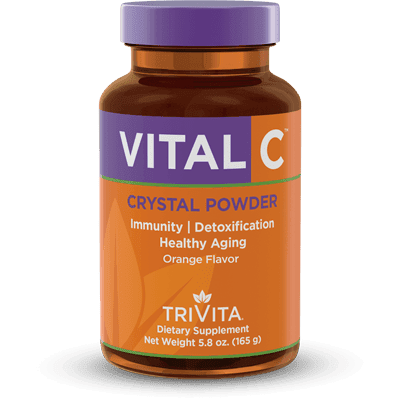Your cart is currently empty!
Category: Muscle System
-

Unveiling the Tranquil Power of Valerian: A Natural Remedy for Relaxation and Deep Restful Sleep
In the fast-paces rhythm of modern life, finding moments of tranquility can be a challenge. Amidst the myriad stressors, valerian (Valeriana officinalis) emerges as a soothing ally, offering a host of benefits to promote relaxation and well-being.

Stress and Anxiousness: Valerian, a perennial herb native to Europe and Asia, has been employed for centuries as a natural remedy for various ailments. It most celebrated attribute s its ability to induce calmness and alleviate stress and anxiousness. The herb achieves this by interacting with the gamma-aminobutyric acid (GABA) receptors in the brain, promoting a sense of relaxation and tranquility.1,2
Sleep: One of valerian’s significant benefits is its potential to improve sleep quality. For individuals grappling with insomnia or restless nights, valerian may offer a natural alternative to aid in achieving a more restful sleep. Studies suggest that valerian may reduce the time it takes to fall asleep and improve overall sleep quality naturally without the side effects commonly associated with synthetic sleep aids.3
Muscle Tension: Beyond its calming effects, valerian possesses muscle-relaxant properties. This makes it a valuable tool for individuals dealing with tension or muscle spasms. By easing muscular discomfort, valerian contributes to an overall sense of physical and mental well-being.4
Why TriVita? Each gummy contains 1,500 mg of valerian root extract, is sugar free, gluten free, non-GMO, vegan and has a great-tasting natural blackberry flavor and color.
References
- https://pubmed.ncbi.nlm.nih.gov/14742369/
- https://www.ncbi.nlm.nih.gov/pmc/articles/PMC7585905/
- https://www.ncbi.nlm.nih.gov/pmc/articles/PMC4394901/
- https://www.ncbi.nlm.nih.gov/pmc/articles/PMC5934700/
-

Get to Know NO—
When you hear “nitric oxide,” you might think of nitrous oxide, better known as laughing gas. While you might appreciate nitrous oxide gas at the dentist’s office, nitric oxide is quite different. Taking care to maintain plenty of nitric oxide in our bodies is no laughing matter, and you need to know why.
Doctors Robert Furchgott, Louis Ignarro and Ferid Murad won the 1998 Nobel Prize for medicine after discovering the importance of “nitric oxide as a signalling molecule in the cardiovascular system. In the two decades since, nitric oxide has been studied extensively and is even considered by some to be the most important molecule in the body due to its role in transmitting nerve impulses from cell to cell in every tissue in the body.
Heart Disease on the Rise Around the World
According to the World Heart Federation, deaths due to cardiovascular disease have risen 60% across the globe over the last 30 years. The World Health Organization estimates that 1.28 billion adults over age 30 have hypertension, or high blood pressure, with only 21% having it under control.
Statistically speaking, half of all men in the United States, and nearly half of women, have hypertension. What’s more, almost half of the adults in the U.S. with high blood pressure aren’t aware they have the condition and, therefore, aren’t likely to do anything to improve their cardiovascular health.
While such numbers may not come as news to you, you might be surprised to learn that heart disease often has less to do with the heart itself than with the arteries and blood vessels throughout your circulatory system.
High blood pressure occurs when the force of blood pushing against the walls of your arteries is consistently too high. Vasodilation, or relaxation, of the arteries can become compromised due to damage caused by years of uncontrolled elevated blood pressure, high lipids and glucose in the blood, and calcified plaque buildup in the arterial lining. Instead of the heart having smooth, flexible arteries to pump blood through, the heart has to work extra hard to force blood through narrow, stiff arteries, which can lead to serious cardiovascular conditions as we age.
What Does Nitric Oxide Do in the Body?
The best known function of nitric oxide in the body is its ability to help manage high blood pressure, but healthy levels of nitric oxide generate a wealth of benefits for a number of body systems.
- Cardiovascular – In healthy arteries, nitric oxide signals the vasodilation response of arteries. Vasodilation improves blood flow, increases oxygen in the blood, and modulates blood pressure.
- Pulmonary – Similar to its function in the cardiovascular system, nitric oxide signals bronchodilator nerves to dilate, increasing the lungs’ ability to deliver oxygen throughout the body.
- Immune – Nitric oxide blocks virus replication, giving the immune system a better chance of fighting off symptoms associated with viruses, harmful pathogens and other foreign invaders.
- Cognitive – Studies have shown that a nitrate-rich diet may increase regional cerebral blood flow to the frontal lobe of the brain in older patients, an important factor in protecting against cognitive decline.
- Endocrine – This molecule has been shown to improve insulin sensitivity, which may reduce diabetes complications, and it is known to help improve other hormone functions in the body, as well.
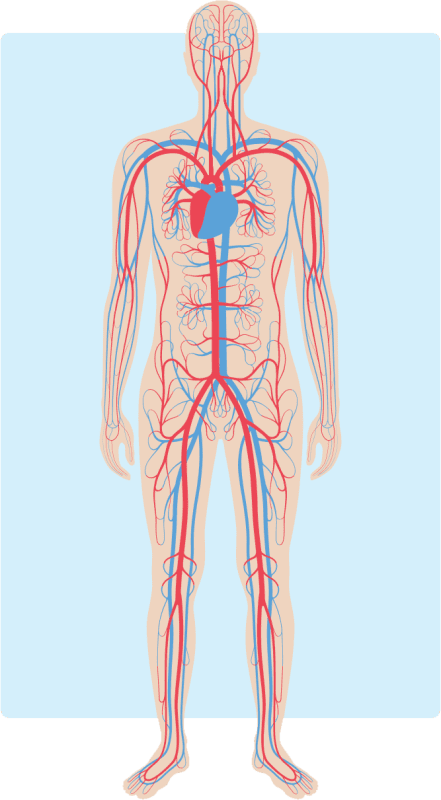
How Do You Get Nitric Oxide?
The good news is that our bodies produce nitric oxide as naturally as we breathe, literally! Deep breathing in through your nose not only produces nitric oxide in the paranasal sinuses, it effectively delivers it down into your lungs. Aside from your sinuses, nitric oxide is produced in the endothelial cells that line the insides of your blood vessels—all 60,000 miles of them.
The bad news is that our bodies produce less and less nitric oxide as we age, which can leave us with a lack of energy, high blood pressure and cognitive decline. By age 40, most Americans produce only half the nitric oxide they produced in their 20s. By age 50, nitric oxide production has decreased to only 35%, and it falls to a mere 15% of what it once was by the time we reach age 60.
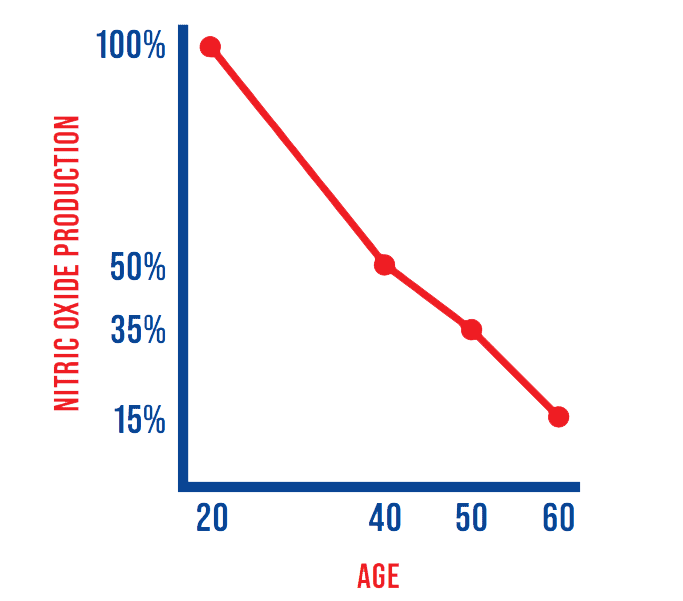
With such a dramatic decrease in our bodies’ own ability to produce this crucial molecule, it is essential that we find other ways to get nitric oxide. Sadly, nitric oxide itself isn’t something you can consume; however, we can consume food rich in nitrates, which the body converts into nitric oxide, as well as antioxidants, which aid in the conversion process.
The amino acids L-arginine and L-citrulline also produce nitric oxide in the body. L-arginine can be found in red meat, fish and dairy products, while L-citrulline is also available in meat, as well as legumes. Beets are also a wonderful source of nitrates.
A Scientific Solution for Low NO
If red meat and dairy aren’t feasible for your diet for any reason, supplementing with a product like TriVita’s Nitric Oxide Plus may be an excellent way to make sure your body can make enough nitric oxide.
With 2,000 mg of beet root powder, plus horse chestnut and the amino acids L-arginine and L-citrulline, TriVita’s unique nitric oxide formulation is optimally balanced to help support blood flow and healthy circulation.
References
1https://www.nobelprize.org/prizes/medicine/1998/7543-the-nobel-prize-in-physiology-or-medicine-1998/
2https://world-heart-federation.org/news/deaths-from-cardiovascular-disease-surged-60-globally-over-the-last-30-years-report/#:~:text=Search%20for%3A%20Search-,Deaths%20from%20cardiovascular%20disease%20surged%2060%25%20globally,the%20last%2030%20years%3A%20Report&text=GENEVA%2C%2020%20May%202023%20%E2%80%93%20Deaths,World%20Heart%20Federation%20(WHF)
3https://www.who.int/news-room/fact-sheets/detail/hypertension
4https://www.cdc.gov/bloodpressure/facts.htm#:~:text=Rates%20of%20High%20Blood%20Pressure%20Control%20Vary%20by%20Sex%20and%20Race&text=A%20greater%20percentage%20of%20men,pressure%20than%20women%20(44%25).&text=High%20blood%20pressure%20is%20more,or%20Hispanic%20adults%20(39%25)
5https://www.who.int/news-room/fact-sheets/detail/hypertension
6https://www.trivita.com/the-sky-is-the-limit/
7https://www.ncbi.nlm.nih.gov/pmc/articles/PMC4425174/
8https://www.ncbi.nlm.nih.gov/pmc/articles/PMC1906415/
9https://www.ncbi.nlm.nih.gov/pmc/articles/PMC3018552/
10https://www.ncbi.nlm.nih.gov/pmc/articles/PMC3390088/
11https://pubmed.ncbi.nlm.nih.gov/8971255/#:~:text=Abstract,inspiration%2C%20especially%20during%20nasal%20breathing
-

Vitamins for Muscles – Healthy Muscle Nutrients
This article will discuss the importance of vitamins for muscles. It will also cover the nutrients that aid in muscle growth, recovery, and overall health. We’ll discuss how vitamins like D, A, C, and E help keep muscles strong and healthy.
Additionally, we will highlight the significance of essential amino acids, omega-3 fatty acids, magnesium, and hydration for optimal muscle function. Adding important nutrients to our diet can help our muscles and improve our overall energy levels. This, in turn, can lead to a more active and energetic life.
Vitamin D

Vitamin D, is an essential vitamin for your muscles, which is vital in maintaining normal function. Not taking enough Vitamin D can make you weak and lose muscle, making you more likely to fall. Moreover, Vitamin D supplements can benefit individuals experiencing muscle pain or weakness. Vitamin D is crucial for older adults, who fall more easily.
Vitamin D plays a crucial role in maintaining the health and strength of our muscles. It acts as a building block for muscle tissues, ensuring their proper function and preventing any weakness or loss. Without enough Vitamin D, our muscles can become vulnerable, making us more prone to falls and injuries.
For individuals experiencing muscle pain or weakness, Vitamin D supplements can be highly beneficial. These supplements provide an extra boost of this essential vitamin, helping to alleviate discomfort and improve muscle strength. Vitamin D can help athletes recover and older adults stay mobile. It’s important for both groups.
Speaking of older adults, they are particularly susceptible to muscle-related issues. As we age, our bodies naturally produce less Vitamin D, making it even more crucial to supplement our intake. By ensuring an adequate amount of Vitamin D, older adults can reduce their risk of falls and maintain their independence.
How can we obtain Vitamin D naturally?
The primary source is sunlight. Spending time outdoors, especially during the sunnier months, allows our bodies to produce Vitamin D naturally. However, it’s important to strike a balance and protect our skin from harmful UV rays by wearing sunscreen.
Certain foods provide Vitamin D, including fatty fish, fortified dairy products, and egg yolks. Eating these foods can help us meet our Vitamin D needs. Additionally, consuming these foods can also help us maintain our muscle health.
In conclusion, Vitamin D is a vital nutrient for our muscles. Getting enough of this vitamin, whether from supplements, sunlight, or a balanced diet, can keep our muscles strong and healthy. So, let’s make Vitamin D a priority and give our muscles the support they need to thrive.
Essential Amino Acids play a key role in muscle building and repair.

Essential amino acids are vital in keeping our muscles healthy and strong. While they are not necessarily 30vitamins for your muscles, they are a critical part of them. These essential proteins are obtained from dietary sources, including meat, eggs, poultry, and soy products. Acting as the building blocks for our muscles, they facilitate growth, repair, and overall muscular well-being.
When we consume protein-rich foods, our bodies break them into these essential amino acids. Our muscles then utilize these amino acids to support their growth and maintenance processes. They serve as the foundation for building strong and resilient muscles.
Including Myohealth in our diet ensures a sufficient supply of essential amino acids for optimal muscle health. By nourishing our muscles with these vital components, we provide them with the necessary support to thrive and function effectively. A well-nourished muscular system contributes to an active and vibrant lifestyle.
Myohealth helps muscles heal.
Eating protein or taking Myohealth helps muscles heal by providing the materials they need to rebuild. These amino acids act as the repair crew, working on those damaged muscle fibers and helping them heal. This helps us recover faster and makes our muscles more substantial and more resilient.
In addition to repair, essential amino acids contribute to overall muscular well-being. They fuel our muscles to function effectively during workouts and everyday activities. With a sufficient supply of these vital components, our muscles may become fatigued and able to perform at their best.
By adding Myohealth into our diet, we are giving our muscles the support they need to thrive. We provide them with the necessary nutrients to grow, repair, and function optimally. This not only leads to stronger and more resilient muscles but also contributes to an active and vibrant lifestyle.
If you want to improve your performance or stay healthy and active, try adding Myohealth to your daily routine. Give your muscles the nourishment they deserve and unlock their full potential. You can reach your fitness goals and live your best life by having the necessary amino acids.
Vitamin A
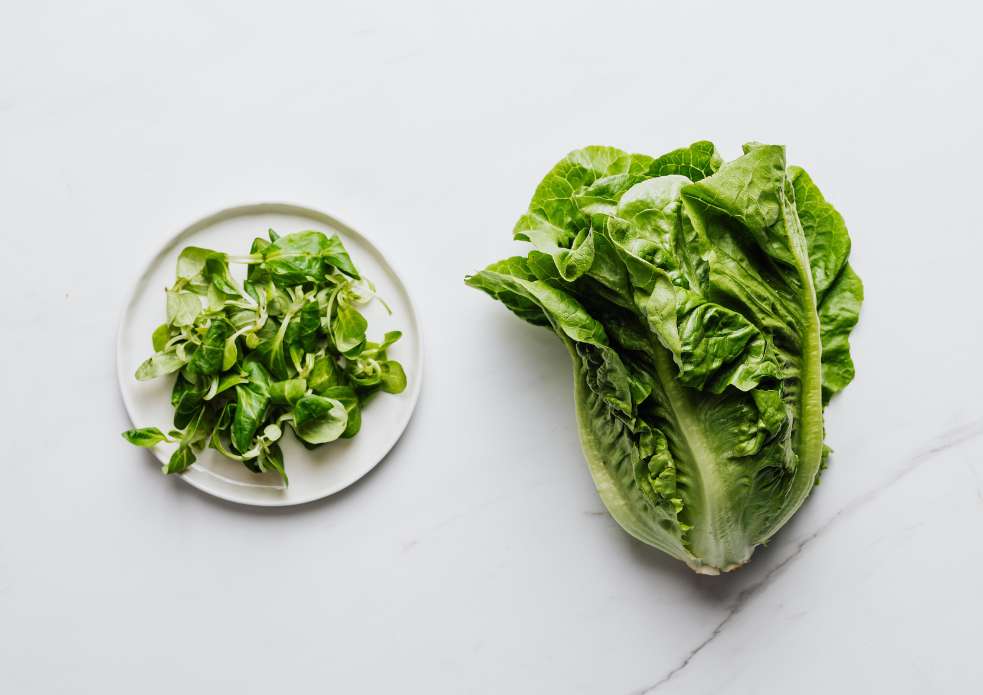
Vitamin A, a key player in muscle growth, is crucial for protein synthesis, a fundamental process for increasing muscle mass. The A Vitamin is essential for muscle development in men, contributing to testosterone production. Vitamin A helps make your muscles stronger by speeding up cell growth and development. Furthermore, it supports bone health, which helps your muscles greatly.
Vitamin D is important for muscles and bones. It helps absorb calcium, which is needed for strong bones. By ensuring adequate levels of Vitamin D in our diet, we can support the overall health and function of our muscles.
Moreover, by adding Omega-3 fatty acids into our meals can also have a positive impact on muscle health. These healthy fats help reduce inflammation in the body, which can aid in muscle recovery and prevent muscle soreness. Fatty acids have been shown to enhance muscle protein synthesis, promoting muscle growth and strength.
Another nutrient that shouldn’t be overlooked is magnesium. Magnesium is involved in over 300 biochemical reactions in the body, including muscle contraction and relaxation. It helps regulate muscle function and can prevent muscle cramps and spasms. Including magnesium-rich foods like spinach, almonds, and bananas in our diet can help ensure optimal muscle health.
Lastly, hydration is key for muscle health. Drinking enough water throughout the day is essential for proper muscle function and recovery. Water helps transport nutrients to the muscles and removes waste products, preventing muscle fatigue and promoting optimal performance.
We need to consume essential nutrients to maintain healthy muscles. These include Vitamin A, Vitamin D, Omega-3 fatty acids, and magnesium. Additionally, staying hydrated is also important for muscle health. This helps us live an active life with strong muscles that can work well and stay healthy.
Vitamin C
Vitamin C, another essential nutrient for muscle health, is an antioxidant, safeguarding your muscles against damage caused by oxidative stress. It also plays a pivotal role in collagen formation, a crucial structural protein in your skin, muscles, bones, and tendons. Collagen acts as a scaffold, imparting strength and structure to your body. Insufficient Vitamin C intake can reduce collagen production, negatively impacting muscle health and other aspects of your well-being.
Vitamin E

Vitamin E holds critical significance in the development of strong muscles. It is essential in repairing the delicate plasma membrane of cells, particularly muscle cells, prone to frequent tears.
Failure to correct these membranes can result in cell death, leading to muscle-wasting disease. Additionally, inadequate Vitamin E levels can diminish muscle strength and contribute to frailty. Furthermore, Vitamin E serves as a vital combatant against stress.
Conclusion
Vitamins play a pivotal role in muscle growth and recovery, exerting their effects at a cellular level. They contribute to crucial functions such as reducing stress, promoting collagen formation, and aiding membrane repair. By doing so, they aid in increasing muscle mass and providing structural strength to support optimal muscle function.
Moreover, vitamins also play a significant role in enhancing the immune system, which is crucial for overall muscle health. A strong immune system helps to protect the muscles from infections and inflammation, allowing them to function optimally.
Vitamin C, in particular, is known for its immune-boosting properties. It helps in the production of white blood cells, which are essential for fighting off harmful pathogens.
In addition to immune support, vitamins are essential for energy production in the muscles. B vitamins such as B12 and B6 aid in the breakdown of carbohydrates, proteins, and fats. This breakdown provides muscles with the necessary energy for movement. Without adequate levels of these vitamins, muscle fatigue and weakness can occur, hindering performance and recovery.
Furthermore, vitamins act as antioxidants, protecting the muscles from oxidative stress. Oxidative stress happens when there’s an imbalance between harmful free radicals and the body’s ability to counteract them. This imbalance can lead to muscle damage and inflammation. Vitamins A, C, and E are strong antioxidants that fight free radicals, lowering muscle injury risk and aiding faster recovery.
In conclusion, maintaining optimal vitamin levels is crucial for muscle growth, strength, and overall health. These essential nutrients support muscle repair, enhance immune function, provide energy, and protect against oxidative stress. Also, talking to a doctor or our Care call center team can help you determine how to get the right vitamins for strong muscles.
-

Improving Flexibility, Mobility, and Range of Motion
Inflammation is directly associated with symptoms such as swelling, pain, heat and limited mobility. Inflammation can affect your quality of life. Reducing your inflammation can alleviate these symptoms.
The Difference Between Range of Motion, Mobility, and Flexibility
Flexibility and mobility are two popular terms that are often used interchangeably. Many people think that if you stretch enough, you’ll maintain your mobility. However, they are different, and flexibility is only part of the equation when it comes to your movement.
Flexibility is a muscle’s ability to stretch when needed. For instance, imagine a rubber band. If you pull it in opposing directions, it should stretch. The same happens with flexible muscles. It’s worth noting that flexibility often refers to muscles, but can also apply to joints, ligaments, and tendons.
Mobility, on the other hand, is the ability of your joints to move through an intended range of motion. Your shoulder, which is a ball-and-socket joint, is designed to move in many directions. With normal mobility, you can move your shoulder side-to-side, forward and backward, as well as in circles. If you can’t move it in all of these ways, there is a lack of mobility in the joint.
Range of motion is simply a measurement of your mobility. It is the amount of movement you have at each joint. The primary determiner of how well your joints move relies on the shape and structure of your bones, how and where they come together, as well as the health of the ligaments and tendons that attach to your bones. Everyone has a unique available range of motion. That being said, you can improve your range of motion through a combination of stretching and strengthening exercises.
Common Factors That Affect Mobility and Flexibility
Injuries: Slips and falls are common, especially as you age. When you experience a physical injury, inflammation kicks in right away to begin repairing the wound and setting the stage for healing. Symptoms of acute inflammation, such as swelling and pain, can limit your mobility. To further complicate this, prolonged mobility impairment can make you more susceptible to physical injury. Click here to read more about preventing and recovering after a fall or injury.
Diseases: Similar to injuries, certain illnesses can prohibit you from moving freely and performing everyday activities. On the surface, if you don’t feel well, lack energy, or have other symptoms associated with a disease or illness, your mobility can be impaired. However, it’s important to note that chronic inflammation plays a part in many conditions. Inflammation brings with it symptoms of its own, such as aches and pains. These sensations can make movement uncomfortable and difficult.
Excess Fat Mass or Skin: Extra fat mass can prevent joints from moving through their full range of motion. This is possible by the fat or muscle physically limiting or blocking its movement. For example, a large amount of abdominal fat can limit the hips range of motion and prevent you from pulling your knee into your ribs.

Restore Your Body’s Vitality and Get Moving!
Don’t let stiff joints and limited mobility hold you back. Your lifestyle is a major contributing factor to your overall health as well as your mobility, flexibility, and range of motion. Here are a few things to keep in mind if you want to improve your movement.
- Reduce Inflammation
As explained above, inflammation can limit your ability to move with ease and comfort. There are many reasons your body could be inflamed, so it’s important to focus on your lifestyle as a whole
- Stretch Before and After You Exercise
Before you exercise or are going to be physically active, it’s important to perform dynamic stretches, such as arm circles or pulling your knees into your chest. These types of stretches help warm up your muscles and prevent strains or other injuries during exercise. Afterward, when your muscles are already warm, static stretches can safely be performed. Static stretches are done by holding a stretch for 15 seconds or longer. This type of stretching can significantly improve your flexibility and range of motion.
- Focus on Strength
What is mobility without strength? Muscle mass naturally decreases with age, but strength training can help. Strength training will not only help you improve your overall mobility, and it has other great benefits too
- Listen to Your Body
This might be the most important takeaway. Pushing yourself too far, over-exercising and not allowing enough time for recovery are all great ways to guarantee an injury. If you’re new to exercise or have issues with mobility, talk to a personal trainer or physical therapist first and start slow. Jumping into activity or forcing yourself to touch your toes will only set you back.
- Reduce Inflammation
-

Look and Feel Better with Essential Amino Acids
Amino acids are the building blocks of protein and play an important role in the health of your entire body, including your integumentary system which involves your largest organ – your skin! Your skin is the first thing people see and can say a lot about your overall health. Essential Amino Acids (EAA) need to be on your list of must-have supplements to support your entire body.
What are Amino Acids?
There are over 20 different amino acids, which are crucial components of human life. Amino acids contribute to many metabolic processes, protein synthesis and play a role –either directly or indirectly– in nearly every bodily function.
Some amino acids can be produced within the body; however, there are nine amino acids that our bodies can’t produce. For that reason, these are referred to as Essential Amino Acids (EAA). These include histidine, isoleucine, leucine, lysine, methionine, phenylalanine, threonine, tryptophan and valine. Each plays a different role in the body and has unique properties essential to your wellness.
It’s important to note that EAAs are not the same as branched-chain amino acids (BCAA). Branched-chain amino acids are a group of three Essential Amino Acids that have a chain that branches to the side. These amino acids are leucine, isoleucine, and valine. So, all BCAAs are EAAs, but not all EAAs are BCAAs. While BCAAs are important for energy production, muscle metabolism, and overall health, they alone are not enough.

How do Essential Amino Acids help your body?
Amino acids are necessary for the process of creating collagen, fibrinogen
and elastin. These are the connective and structural proteins that keep your joints, tendons, ligamentsand skin strong and healthy as you age.Collagen and elastin production begins to slow down around your 20s. If your body doesn’t produce enough elastin and collagen, it can start to take its toll on your joints, cartilage, hair, skin
and nails making you feel and look older than you actually are!In addition, amino acids play a key role in:
- Healthy triglyceride and LDL levels maintenance
- Blood glucose level regulation
- Metabolism regulation
- Blood pressure regulation
- Cardiovascular health
- Liver health
- Neurotransmitter production
- Injury and illness recovery
- Improved muscle protein synthesis
Essential Amino Acid Sources
As explained earlier, nine amino acids are necessary because your body cannot produce them through normal metabolic processes, they must come from your diet or supplementation. Natural sources of these EAAs include meat, fish, eggs
and plant-based proteins. However, relying on protein from your food alone isn’t the most effective means.
In his book, The Building Blocks of Life, renowned amino acid expert and competitive athlete Dr. Robert Wolfe explains that dietary protein is the conventional source of amino acids. However, approximately 30% of Americans over the age of 65 fail to consume the minimum daily recommended intake of protein. Even with adequate consumption, dietary protein alone doesn’t provide the balance of EAAs necessary for optimal health.
While protein still has a place on your plate, supplementation is the best way to ensure you are receiving the right balance of Essential Amino Acids for your goals.
-

Are You Really Exercising Enough?
Nearly three-quarters of the US population isn’t getting enough exercise. According to results from the CDC’s National Center for Health Statistics, only 23 percent of American adults meet the national guidelines for aerobic and strengthening exercise. Researchers looked at five years of health and lifestyle data collected through the National Health Interview Survey. More than 155,000 adults (age 18 – 64) from 2010 to 2015 were asked if and how often they performed aerobic and/or muscle-strengthening exercise in their free time. Of those surveyed, only 23 percent of people met the nationally recommended guidelines.What is Recommended?
According to the CDC, two types of physical activity are necessary to improve your health – aerobic and muscle-strengthening. For important health benefits adults need:- Two hours and 30 minutes (150 minutes) of moderate-intensity aerobic activity per week, or
- One hour and 15 minutes (75 minutes) of vigorous aerobic exercise per week.
- Plus, two or more days of muscle-strengthening activities that work major muscle groups.

What Activities Count?
Aerobic activity (cardio) is any activity that gets you breathing harder and your heart beating faster. Aerobic exercises include walking, hiking, martial arts, dancing, swimming, bicycle riding and golfing. Muscle-strengthening activities keep your muscles strong and help [TVBLOGCOPY]prevent muscle loss[TVBLOGCOPY][MWSBLOGCOPY]prevent muscle loss[/MWSBLOGCOPY]. Strengthening activities include weightlifting, working with resistance bands, yoga and bodyweight exercises. Don’t have a lot of time? You can make a difference in your health just by [TVBLOGCOPY]working 10 minutes[/TVBLOGCOPY][MWSBLOGCOPY]working 10 minutes[/MWSBLOGCOPY] at a time. -

Three Easy Ways to Reduce Inflammation with Exercise
When it comes to managing inflammation, there isn’t one thing that will work. Instead, it’s essential to turn your focus to every aspect of your lifestyle. Eat a healthy diet full of anti-inflammatory foods, reduce stress, supplement wisely and choose the right types of exercise. One study followed over 4,000 middle-aged men and women for 10 years and found that individuals that met the national physical activity guidelines were able to lower their inflammation by 12 percent. Just 20 minutes a day is enough to reduce inflammation, but what are the best activities when recovering?Walking
Whether you feel achy, lack the motivation to hit the gym or just need to reset your body, walking is an excellent choice. Going for a long walk is a great way to reap the benefits of daily activity without increasing inflammation. Even just a walk around a park or through your neighborhood is enough to get your heart pumping, moving fresh blood and oxygen to muscles and boost your mood.Swimming
Swimming is a fantastic option for anyone looking for a low-impact workout. It offers all the benefits of other aerobic exercises without damaging your joints. In addition to the cardiovascular benefits, swimming can help improve muscle strength and flexibility.
A study published in Oxidative Medicine and Cellular Longevity found that just 12 weeks of yoga practice and meditation resulted in lower levels of inflammation and significantly lower levels of cortisol. Deep, controlled breathing associated with both yoga and meditation help to calm the nervous system and promote physical and mental relaxation which is important when dealing with unmanaged inflammation. Yoga and Meditation
Yoga and Meditation -

6 Surprising Benefits of Strength Training
Strength training—also known as resistance or weight training—is designed to improve your muscular fitness by working specific muscle groups against external resistance. Consistently performing strength building exercises has many important benefits aside from just maintaining a healthy bodyweight and increasing muscle strength.BELOW ARE SIX PHYSICAL AND EMOTIONAL BENEFITS TO STRENGTH TRAINING.
1. Burn More Calories
Strength training increases your metabolism and can help you burn more calories during and after your workout. Once you finish a workout your metabolism continues to burn extra calories while your body recovers, this is called excess post-exercise oxygen consumption (EPOC).2. Reduce Your Risk of Diabetes
Resistance training has been shown to improve insulin sensitivity and lower blood glucose levels. The more healthy muscle you have, the more efficiently you can transport glucose from your bloodstream without increasing insulin levels.13. Relieve Stress
Excess stress can rob you of vitality, joy and overall well-being, yet it is a major part of our lives. Weight lifting has been shown to elevate mood and decrease stress, anxiety and feelings of depression by increasing the production of endorphins, your brain’s feel-good neurotransmitters.4. Strengthen Your Immune System
Consistent moderate-intensity exercise can help boost your immune system and offset chronic inflammation.2 However, over-training can actually reduce your immune response and make you more susceptible to illness and injury.5. Lower Blood Pressure
Studies have shown that low and moderate-intensity resistance training may reduce blood pressure.3 However, it is important to speak with your doctor if you have high or uncontrolled blood pressure because weight lifting can cause a temporary rise in BP.6. Sleep Better
Although researchers don’t completely understand why, studies show that exercise can help you fall asleep faster and improves overall sleep quality. With just 30 minutes of moderate exercise a day, you could start noticing a difference in sleep quality.4
References:- NCBI: The underappreciated role of muscle in health and disease.
- Clinical Journal of Sports Medicine: Is Regular Exercise a Friend or Foe of the Aging Immune System?
- AHA Journals: Hypertension.
- Johns Hopkins Medicine: Exercising for Better Sleep.
-
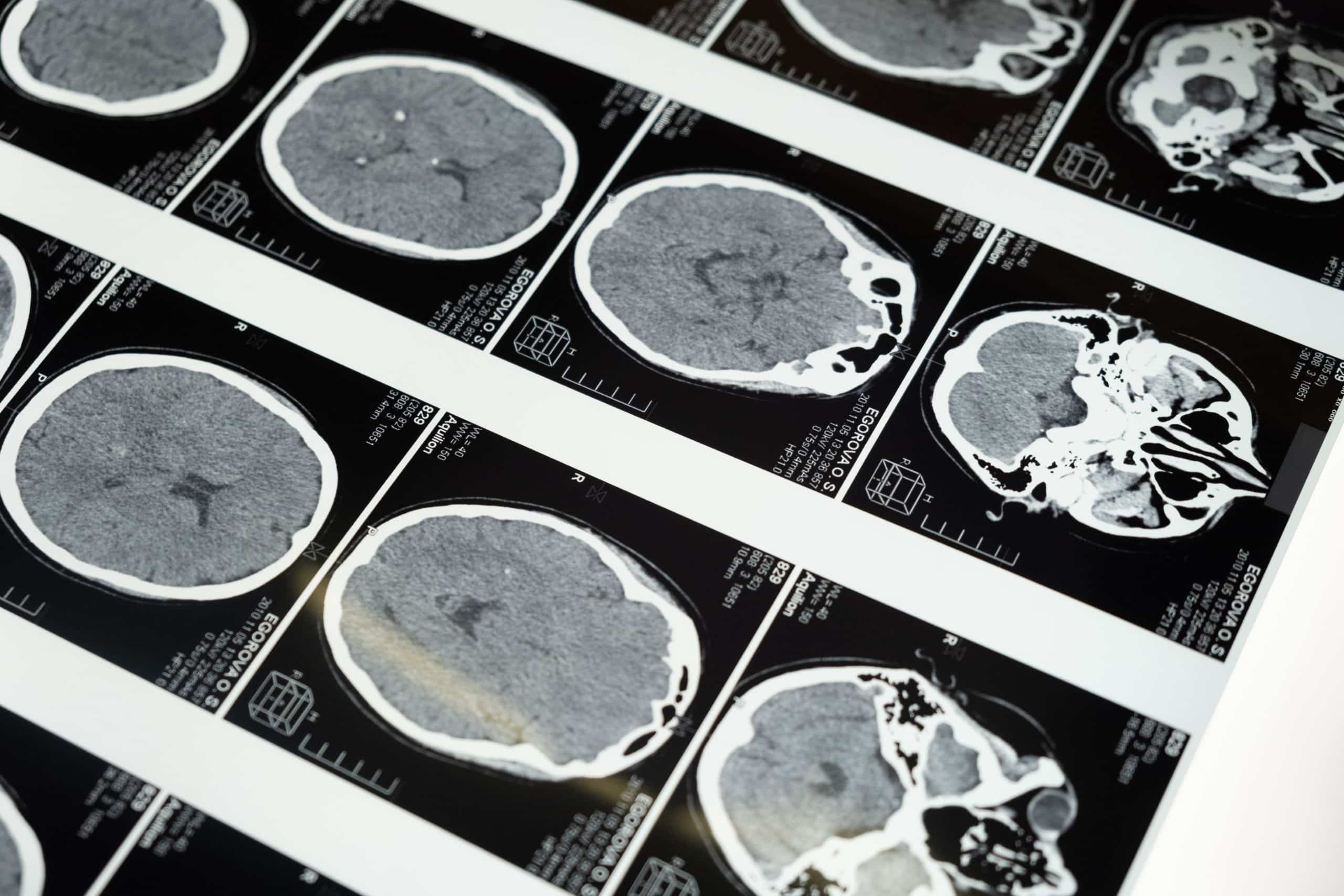
Work Your Legs, Strengthen Your Brain
For centuries the relationship between physical activity and brain health has been acknowledged, but new studies are beginning to demonstrate the significance of movement on neurogenesis.
Based on work with mice, a new study published in the journal Frontiers in Neuroscience highlights the intricate brain-muscle connection. The study involved restraining the hind legs of mice for 28 days. The mice were still able to move around, feed and groom normally, and no additional stress was observed during the trial. Another group of mice was free to move unrestricted. A subsequent examination of a specific area in their brains – the sub-ventricular zone – found that neural stem cell activity was reduced by 70 percent compared to the control group. Also, drastic deterioration of specialized nerve cells was observed in the restrained group.
What does this mean for you?
The results of this study suggest that move movement, particularly weight-bearing exercise, sends signals to the brain that maintain existing cell health and triggers new cell growth.
“Neurological health is not a one-way street with the brain telling the muscles ‘lift,’ ‘walk,’ and so on,” said the lead study author Raffaella Adami of the Universita degli Studi di Milano in Italy. She goes on to say, “It is no accident that we are meant to be active: to walk, run, crouch to sit, and use our leg muscles to lift things.”Additional studies are crucial since research in animals doesn’t always produce the same results in human trials. But this study takes a major step in demonstrating the importance of movement in maintaining human health.
“Our study supports the notion that people who are unable to do load-bearing exercises – such as patients who are bed-ridden, or even astronauts on extended travel – not only lose muscle mass, but their body chemistry is altered at the cellular level, and even their nervous system is adversely impacted,” says Dr. Adami.
This research provides yet another reason to remain active, and movement of any kind is better than none. But if you face physical limitations, there are other ways to help increase your brain power through diet, supplementation and developing meaningful relationships.
Learn more about the nine things you can do today to improve your brain fitness.
-

Muscle Loss Linked to Chronic Inflammation
Many physiological changes occur with aging, and recent research shows that sarcopenia and loss of overall muscle strength can be added to the list of health concerns associated with unaddressed inflammation. Recent research shows that age-related chronic low-grade inflammation is a contributing factor to sarcopenia and affects both the breakdown and synthesis of muscle. Older people who suffer from sarcopenia are more likely to have high blood levels of the inflammatory markers such as CRP, SED rate and adipoenctin.What is Sarcopenia?
Sarcopenia is the age-related loss of muscle mass, strength and function that generally appears after the age of 40 and accelerates after the age of 75. It is estimated that between 25 and 50 percent of North Americans over the age of 65 suffer from sarcopenia that is significant enough to limit their daily activities. Age-related loss of muscle strength robs older adults of their independence and heightens their risk of experiencing devastating injuries and possibly death from sudden falls and other accidents. While mostly observed in physically inactive adults, sarcopenia is also seen in older adults that remain physically active throughout their lives. Regularly engaging in physical activity is essential to avoiding sarcopenia, but inactivity isn’t the only contributing factor. Sarcopenia is a multifaceted disease that may result due to inflammation, nutritional imbalances and lack of resistance training, neurological decline and mitochondrial decline.Prevent and Slow Muscle Loss
Scientists are working to understand the causes of sarcopenia; however, most interventions have focused on improving muscle strength and nutrition. Exercise provides some stimulus and benefits, but during times of bed rest, such as after surgery or injury, mobility may be severely limited. One study set out to determine if supplementation with essential amino acids (EAA) could offset muscle loss experienced during prolonged inactivity. During the 28-day trial, researchers observed lean leg mass was maintained in the experimental group. The group also retained more muscle strength than the control group. Researchers determined, “supplementation may represent a viable intervention for individuals at risk of sarcopenia due to immobility or prolonged bed rest.” Your lifestyle plays a significant role in building strong muscle as you age. Many people assume they can add more protein to their diets to make up for lost muscle mass, but that may not be enough. The role of protein in food is not to provide our bodies with proteins directly, but to supply the amino acids from which the body can make its own proteins. When we eat foods that supply each essential amino acid in adequate amounts, our body supports protein synthesis.Check Your Inflammation
Inflammation is the immune system’s response to damage and helps fight infection and heal injuries. However, inflammation, like stress, is meant to be an acute process in the body, designed to serve a purpose, then resolve. When it becomes chronic, it depletes the body’s resources and causes deep damage to tissues and organ systems. A simple blood test is used to measure C – reactive protein (CRP) in the body. The CRP test isn’t site-specific, so it shows the overall level of inflammation and a low level of CRP doesn’t necessarily mean there is no inflammation present.
There are simple steps you can take to help support healthy inflammation. Aim to avoid pro-inflammatory foods and choose high-quality vegetables rich in antioxidants, healthy fats and drink enough water. Other healthy lifestyle choices include managing stress and maintaining healthy body weight.
A simple blood test is used to measure C – reactive protein (CRP) in the body. The CRP test isn’t site-specific, so it shows the overall level of inflammation and a low level of CRP doesn’t necessarily mean there is no inflammation present.
There are simple steps you can take to help support healthy inflammation. Aim to avoid pro-inflammatory foods and choose high-quality vegetables rich in antioxidants, healthy fats and drink enough water. Other healthy lifestyle choices include managing stress and maintaining healthy body weight.
Use It or Lose It
Adopting a regular exercise program is another way to slow down the loss of strength and coordination. Any type of exercise is better than none; however, resistance training (using weights, machines or bands) is critical for those looking to preserve or increase muscle strength and mass. Regular exercise that includes strength training promotes mobility, overall fitness and improves bone health as well. New research published in the journal Brain, Behavior and Immunity, reported that a 20-minute session of moderate exercise could have anti-inflammatory effects. Suzi Hong, Ph.D., one of the studies researchers says, “Our study found one session of about twenty minutes of moderate exercise resulted in a 5 percent decrease in the number of stimulated immune cells producing TNF.” The primary role of TNF, which is a type of protein that is involved in systemic inflammation, is to regulate immune cells. By adopting a healthy lifestyle that includes balanced dietary modifications, nutritional supplements and regular physical exercise, it is possible to support healthy inflammation response in the body and preserve muscle strength at any age! -

A New Mindset for Aging Well
I am sure all of us experienced a time in our lives when our attitude was really an anti-attitude towards the effects of aging. Not aging itself, as the only alternative to aging is dying. It reminds me of the Kenny Chesney song, “everybody wants to go to heaven, but nobody wants to go now.”
My wife and I wanted to defy the effects of aging and with a pretty intense reaction to the reminders of aging. When my wife got her AARP card in the mail reminding her that she just turned 50 years old and all the benefits of membership, she had a defiant card burning ceremony! Now we smile when we look in the mirror or get those reminders in the mail of our age and realize, we are not anti-agers; we are healthy-agers embracing aging but with goals of extending our quality of life! We and millions of others have entered a healthier mindset of the aging process!
Today there are over 108 million people in the USA that are 50 years of age or older. The 65 years of age population explosion is expected to grow from 50.8 million as of 2018 to 70.4 million people in just twelve years. It is this group that is motivating our desire for a healthier way to age.
The National Council of Aging (NCOA) reported that 80% of adults aged 65 and older have at least one chronic condition; 68% have two or more according to 2015 data from the Centers for Medicare and Medicaid Services. I will not list the conditions but make note that the majority of the conditions are as a result of lifestyle choices! This is excellent news because, as I have said before, if lifestyle choices can make us ill, they can make us well.
With a mindset of healthy aging now at the center of so many people’s thoughts, there are shared values that are very important like independence, freedom and a healthy mind. Autonomy and freedom translate to a lifestyle that maintains mobility and self-reliance. Healthy aging is not so much about longevity but really about extending quality of life. As I have always said, a long life in diapers without the ability to respond to purpose in life is not my idea of a life worth living. It is inevitable we will all age but how we age has a lot to do with the choices we make today.
This is why at TriVita we are moving towards helping our Members understand how best to support their body systems and organs so they can make informed choices for healthy aging and the quality of life that goes with it. We have hero products with additional companion products so our members can make the decisions right for them in supporting their health goals.

Maintaining mobility throughout the aging process strengthens independence and self–reliance, and the musculoskeletal system needs proper nutrients and nurturing activities to remain strong at any age. MyoHealth is a powerful muscle and bone building formula with the nine essential amino acids developed by Dr. Robert Wolfe with over 20 million dollars of National Institute of Health and other institutional funding and with 25 human studies. Now the healthy-agers do not have to accept the accelerated muscle atrophy that causes so much human despair.
Another example of healthy aging is supporting good brain health. Until recently, the attitude about brain health was you either had a good memory, focus and function or you didn’t. A healthy brain has always been separated from lifestyle choices. But now thanks to research and especially Dale Bredesen MD, and other leading medical researchers, we know that diet, physical and mental activity along with targeted nutrition can help support a healthy brain. This is inspiring news for those of us who want to have extended quality of life. It is also why we developed NeuroShine for a better and brighter mind!
Today the healthy aging movement is looking beyond the wrinkles, the thickness of hair, and waistline, to see the whole-person wellness opportunity living with quality of life through the aging process. As I like to say, wellness is having the vitality and energy to do the things you love and need to do; having daily positive emotions of love, forgiveness, gratitude and acceptance; and developing a relationship with God knowing His purpose for your life.
Healthy aging is possible through proper lifestyle choices, and is most appealing when we look at it through the lens of whole-person wellness!
-

Exercise for Energy: Fight Fatigue and Pump Up Your Health
Energy boosting workouts that anyone can do, anytime!
You might be surprised to learn that one of the best antidotes for fatigue is to exercise more, not less! Experts say, when it comes to fighting fatigue, just getting up and walking around will increase energy. But all exercise isn’t not created equal. A study published in a 2008 issue of Psychotherapy and Psychosomatics, University of Georgia researchers found that inactive individuals who routinely complained of fatigue could increase energy by 20% while decreasing fatigue by as much as 65% simply by participating in regular, low-intensity exercise.1 Varying levels of intensity will yield different effects on your energy levels. For example, high-intensity exercise might consist of heavy weight lifting, 45 minutes on the treadmill, etc., while a 15-minute walk would be considered moderate exercise. The intensity of your workout will affect your energy levels. “A lot of times when people are fatigued, the last thing they want to do is exercise,” says researcher Patrick O’Connor, PhD.” But if you’re physically inactive and fatigued, being just a bit more active will help.” When exercising for energy, behavioral therapist and personal trainer Therese Pasqualoni, PhD, says, “You should always aim to exercise in your low to moderate training heart rate range. This will prevent you from depleting your body, and help you avoid feeling fatigued, which would otherwise prevent you from getting the maximum energy benefits.” Before you begin, it’s important to understand your body and be realistic about potential limitations to avoid injury. What’s moderate for some may be too intense for others. Walking is generally a well-tolerated option for most individuals. In addition to walking, other forms of low-impact exercise that help increase energy are yoga, Pilates, swimming and Tai Chi.Need All-Day Energy?
Regardless of your activity level, you can naturally increase your energy and improve performance by drinking water. Dehydration is a common cause of fatigue, so it’s important to stay adequately hydrated. This is especially important if you are incorporating exercise into your day. Always drink pure water before, during and after working out to help decrease workout-related fatigue. If you need energy now, you can turn to certain dietary supplements for a boost. Always look for supplements that support natural energy processes, and skip artificial energy drink and sugar-laden power bars.
References: 1. https://www.karger.com/Article/Abstract/116610 -

Exercise Your Right to a Better Brain: Keep Moving to Stay Mentally Sharp
By Paul E. Bendheim, M.D. Modern research brings us many discoveries and breakthroughs, but the ancients knew something that holds true today: If you want to keep your mind sharp as you age, exercise. The positive relationship between physical exercise and overall health and longevity has been touted for more than two centuries. Modern scientific research methods have proven over and over again what the ancients knew. Here’s just one example: In a landmark 1986 study of almost 17,000 Harvard graduates, Dr. Ralph Paffenbarger and his colleagues found that the risk of death could be slashed through simple exercise. People who consistently burned about 300 calories a day from physical exercise (the amount that the body uses to walk briskly for 45–60 minutes), reduced their likelihood of death from all types of diseases by an extraordinary 28%.Inactivity is as harmful as smoking
The toll on your body from not exercising is about the same as the horrible toll that smoking takes. Most people today are too sensible to consider ravaging their health by smoking. Unfortunately, many of the same people fail to recognize the extraordinary benefits of exercise in preventing and treating medical problems. Regular physical exercise decreases your risk of premature death, heart and blood vessel disease, cancer, stroke, diabetes, obesity, high blood pressure, osteoporosis, bone fractures, anxiety and depression. Exercise also decreases your overall healthcare costs. Thousands of exercise-based research studies published over the past 30+ years add up to one inescapable conclusion: exercise = preventive medicine. What about exercise and the brain, though? Just as you can bulk up a specific muscle through exercise, you can enlarge and strengthen specific regions of your brain through exercise. Sound crazy? It isn’t; it’s science.
Walk toward a bigger, healthier brain
Moderate physical exercise, such as walking for at least 30 minutes three or more times a week, does all this:- Increases blood flow to the brain
- Enlarges your frontal lobes (where decision-making, planning and remembering reside)
- Adds new memory-recording neurons in your hippocampus (where memory-making occurs)

Special benefits for older women
Of interest to women, in particular, is another study published in the Journal of the American Medical Association. The conclusion: “… long-term regular physical activity, including walking, is associated with significantly better cognitive function and less cognitive decline in older women.” What about people who may already be headed for Alzheimer’s or another form of dementia? One study of over 1,700 people ages 65+ said that regular physical exercise “is associated with a delay in onset of dementia and Alzheimer’s disease.” Another found that in people already suffering memory loss, exercise five days a week for just 30 minutes daily could actually bring improvement.Strengthen memory, too
Could exercise help you remember and think better? Does exercise protect your brain from those times when you can’t remember where you left your car keys? Absolutely. From a study by Dr. Kirk Erickson and his colleagues at the University of Pittsburg and University of Illinois, Urbana-Champaign: “Our results clearly indicate that higher levels of aerobic fitness are associated with increased hippocampal volumes in older humans, which translates to better memory function.” Clearly, when it comes to brain health, physical fitness translates to mental fitness. As study after study demonstrates, you don’t need to run marathons or become a long-distance swimmer to benefit, grow and protect this most precious organ. Just place one foot in front of the other, and keep going. This article is intended for educational purposes only.
Reference:- Bendheim, PE, M.D. (2009). The Brain Training Revolution. A Proven Workout for Healthy Brain Aging. Naperville, IL: Sourcebooks, Inc.
-

Muscle Structure & Unrealistic Expectations
The idea of building muscle isn’t as simple as it ought to be.
Some, of course, simply believe in a slimmer and leaner interpretation of peak physical health. Others more or less believe that the more “built” they are, the healthier they’ll be. The truth, insofar as there is one, is somewhere in between. Healthy muscles matter and that means proper exercise and nutrition without neglect, and without going too far overboard. One of the issues that keeps a lot of people focused on big muscles rather than healthy ones is that we are continually shown partially or entirely unrealistic examples of muscular ideals. Perhaps most of all, and for men specifically, this happens in film. It is almost a rite of passage at this point for Hollywood actors to take roles for which they have to “bulk up” for several months. Some of the most prominent examples are in historical epics like Troy, for which Brad Pitt quite literally looked like a demigod, and 300, which garnered so much attention for its actors’ abs that it spawned its own workouts. There have also been plenty of examples in other action and superhero movies, as well as in sports dramas. It sometimes seems as if every actor in Hollywood takes a swing at a boxing movie for the purpose of bulking up. Jacke Gyllenhaal is one of the most recent examples and was almost unrecognizable as boxer Billy Hope in Southpaw. We see examples like these and aspire to look the same as the actors – forgetting, of course, that they’re paid millions to focus intently on fitness for months at a time, and with excellent professional support. By extension, we sometimes see the same actors, or at least versions of the same characters, appearing in video games. There, if anything, musculature can be even more abnormally impressive. And these games can be somewhat difficult to escape if you’re a fan of gaming at all. You don’t need to go out and buy the brand new Marvel vs. Capcom: Infinite console game to see superheroes in all their buff, 3D glory. Marvel and DC heroes alike are all over internet and mobile games as well. Playing options at prominent slot sites include big-name DC Comic heroes’ games, which use images of popular characters as symbols and backdrops. Essentially, no matter where you play, be it in a 3D fighting game or a simple browser-based slot or arcade, you can see the same bulging muscles that represent an unrealistic ideal. Fiction aside, we also see a lot of incredible examples of nearly unrealistic muscle structures in the sports many of us know and love. There are almost too many examples to go through, but to choose someone at the height of physical fitness, we’ll consider LeBron James. Approaching 33 years of age, James is an athlete every bit as physically imposing as some of the movie heroes listed above, if not more so. He towers over the average man, seems not to have an ounce of fat on his body, and has arms that bulge like they were drawn by a comic book artist. Just remember this: his fitness reportedly comes at a price of about $1.5 million a year! Having large muscles is terrific, and if you have the time and know-how, you may even approximate the look of some of these figures more closely than most. But if you’re concerned with muscle health, it’s always important to remember that some of our societal ideals are based on extreme, almost unattainable examples. It’s best to focus on health before pure bulk, and to focus your efforts on your own physique without idolizing that of an actor, athlete, or character.
-

Regain Your Muscle Strength with Help from a NASA Study
Looking to enhance the health of astronauts in space, in 2001 NASA commissioned a bed rest study that 16 years later could pay dividends by improving your muscle strength and function! The risk of extreme muscle loss presents severe limitations for space exploration. In fact, when the body is exposed to zero gravity environments for an extended period, muscles become weak and deteriorate. But muscle loss does not only affect astronauts. As we age, the rate of muscle atrophy increases, especially among older individuals with limited mobility or those that are routinely on bed rest. In the study, elderly individuals confined to bed rest for as little as 10 days actually experienced greater muscle loss than younger patients that were immobile for 30 days. However, there is hope! In this short video, Dr. Robert Wolfe explains the results of the NASA bed rest study and what you can do to prevent further loss of strength and help build new lean muscle at any age!
-

No Time to Exercise? Here’s how to make the most of your workout!
Did you know that MyoHealth amplifies the effects of exercise which will help you to get in shape and get results faster! This means that you can get better results with LESS effort. It’s all about working smarter not harder. MyoHealth is the only US patented blend of all 9 essential amino acids. Taking MyoHealth before and after exercise helps the muscle to repair and recover faster which gets you the results that you want faster!So how does it work?
Amino acids are the cellular building blocks of protein in your body. There are 20 primary amino acids in your body’s proteins, 9 of which are essential to your diet because your cells cannot manufacture them. These amino acids (histidine, isoleucine, leucine, lysine, methionine, phenylalanine, threonine, valine, and tryptophan) are known as Essential Amino Acids. MyoHealth Essential Amino Acid Complex line is the only US patented product to give you all 9 Essential Amino Acids (EAAs) clinically proven to support muscle strength and function. Developed over 20 years based on findings from NASA, National Institutes of Health (NIH) and 25 clinical trials led by renowned amino acid, nutrition and muscle metabolism expert Dr. Robert Wolfe, MyoHealth is the first and only EAA complex to receive a US patent for its unique, highly-effective formulation. What can MyoHealth do for you? It’s clinically proven to:- Provide the EAA’s you need that the body cannot produce on its own
- Synthesize protein more efficiently and effectively
- Help build lean muscle mass faster at any age
- Increase metabolism
-

5 Best Workout Motivation Tips
Some days it can be tough to get motivated to workout.
It’s so easy to tell yourself – I’ll do it tomorrow, but that’s a slippery slope! With our busy schedules and never ending to-do lists, working out is sometimes the last thing you want to do! Here are the 5 best workout motivation tips to get you up and active and actually excited to work out!1. Do it for the view!
Find a fun place that has interesting scenery and take photos as you enjoy activity. It could be a walk in the park, where you notice the intricate flowers, or a sunset jog where the sky changes by the moment. Take the time to really savor the experience of being in the moment and appreciating your surroundings. This beats a boring cardio session on the treadmill any day!!2. Make it fun!
What activities did you used to enjoy as a child? Notice how children run around and play and how excited they are to do their favorite activities. Relive that childhood spirit by doing the activities that you used to enjoy – it could be taking a ballet class, or riding horses again. What about riding a bike or exploring trails in the forest? Cross country skiing, golfing or tennis, choose something that used to get you excited and get going!3. Listen to a good book!
You can listen to most of your favorite books or podcasts while you go for a walk or run or bike… this can be more stimulating than listening to music, and you can learn something too while you’re enjoying your favorite activity! If you get really wrapped up in a book you might even want to extend your fitness time longer to listen to more of the audio!4. Make it social!
Combine your social time with fitness – instead of meeting a friend for a coffee – get out for a walk together. Try a game of golf instead of going to a movie. Get creative with ways that you can enjoy time with friends and family AND get your fitness in too.5. Find the time!
Take 10 minutes and do a quickie interval workout. Don’t feel like you need to spend an hour in the gym. Even just taking 10 minutes and doing a combination of movements can be effective at reaching your goals. Try alternating two (or more!) movements throughout the 10 minutes, alternating every 30 seconds. For example : 30 seconds of pushups, 30 seconds of jumping jacks, 30 seconds of squats, repeating for 10 minutes. -

Healthy Muscles Matter
Why are healthy muscles so important anyway?
Here are 5 interesting ways that muscle health affects you (#5 is going to shock you!)- Diabetes — Having healthy muscles actually decreases your risk of diabetes since muscle is not only important in blunting the magnitude of increases in blood glucose after meals. It also helps prevent decreases in the blood glucose level between meals. What that means to you is this: Maintaining healthy muscles is crucial for keeping your blood glucose levels in the normal range.
- Bone loss — Prevention of the loss of bone with aging (osteoporosis) is highly dependent on the maintenance of adequate muscle mass and function. That is because strong muscles put tension on the bone, and that is vital for healthy bone function.
- Heart health — Heart attacks and strokes are more common and usually more disastrous in individuals with depleted muscle mass. To say it another way: Those with healthier muscles live longer.
- Obesity — Muscle also plays a very important role in energy balance and prevention of obesity. Muscle burns fat because muscle is always burning, even while you are sleeping.
- Brain health — The essential amino acids become important chemical messengers in the brain that can affect mood, appetite, energy level, sex drive and many other behaviors and feelings that affect our lives.
-

Why Eating More Protein Will NOT Prevent Adult Onset Muscle Loss
Think eating more protein will prevent adult onset muscle loss? Think again! Unfortunately as we age,we start to lose more muscle mass every year.<sup>1</sup> Many people believe adding more protein in their diet will eliminate muscle loss and sadly that is not the solution. Even though eating a balanced diet and including exercise in our daily life are cruicial to optimize your health, sometimes even the most healthy lifestyle is not enough when it comes to onset muscle loss. This is where amino acids come into play. MyoHealth Amino acid supplement when added into our daily routine, can do many incredible things, one of them being preventing onset muscle loss.
- https://www.myohealth.com/science/
